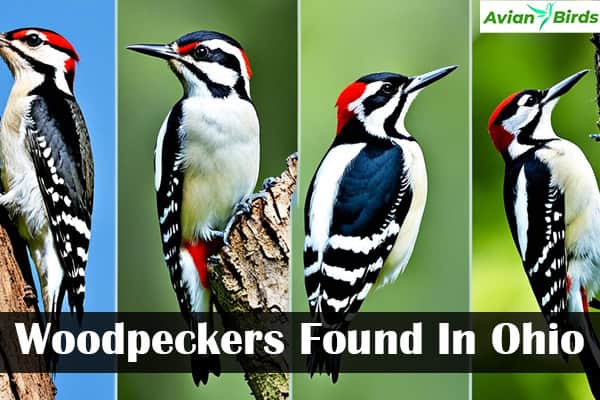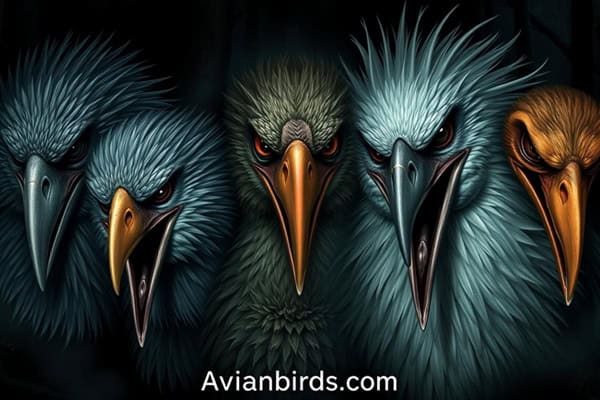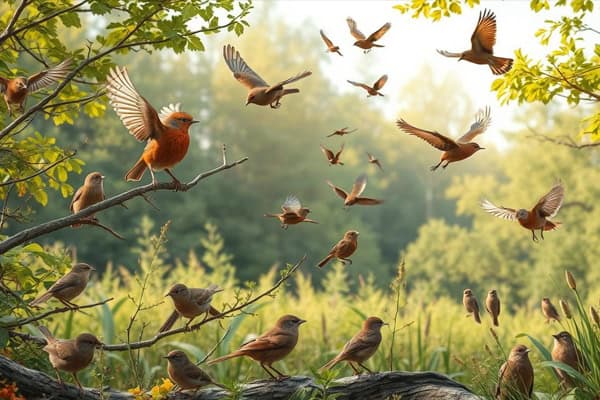Woodpeckers Of Ohio (11 Species With Pictures)
Are you ready for a fascinating journey Woodpeckers in Ohio? We’re lucky to see the variety of these amazing birds in our state. From the tiny Downy Woodpecker to the big Pileated Woodpecker, Ohio is home to 11 unique woodpecker species. Each one has its special traits and ways of living. Let’s dive into the world of these incredible birds and learn about their homes, lives, and importance in Ohio’s nature.
~Here we’ll discuss 11 different types of Woodpeckers in Ohio~
Ohio is famous for its diverse landscapes and habitats, perfect for many bird species, including woodpeckers. These birds, part of the Picidae family, are a delight to watch in Ohio. They live in everything from open fields and marshes to dense forests. Ohio is home to 11 woodpecker species, thanks to its varied terrain.
~Common Woodpecker Species Found in Ohio~
- Downy Woodpecker
- Red-Bellied Woodpecker
- Hairy Woodpecker
- Pileated Woodpecker
- Northern Flicker
- Red-Headed Woodpecker
- Yellow-Bellied Sapsucker
- Red-Cockaded Woodpecker
- Red-Naped Sapsucker
- Black-Backed Woodpecker
- Ivory-Billed Woodpecker
1. Downy Woodpecker
- Scientific name – Dryobates pubescens
- Lifespan – 11 years (maximum recorded)
- Size – 6.3 in (16 cm)
- Weight – 26.5 g (0.9 oz)
- Wingspan – 11 in (28 cm)
The Downy Woodpecker is North America’s smallest and most common woodpecker. It has black and white feathers, a black head, white stripes, and a red patch on the male’s head. These birds live in many places, from forests to backyards.

They visit bird feeders often, looking for insects, seeds, and berries. Despite being small, they help Ohio by eating pests. This makes them a big help to the environment.
2. Red-bellied Woodpecker
- Scientific name – Melanerpes carolinus
- Lifespan – 12 years (maximum recorded)
- Size – (24 cm)
- Weight – (73.5 g)
- Wingspan – (42 cm)
The Red-bellied Woodpecker stands out with its black-and-white look and bright red head. Finding the red on their belly can be tough, but their head color is easy to spot. These birds live in many places, from forests to cities.

They make a lot of sounds and come to feeders for insects, seeds, and nuts. Their calls and drumming are common in Ohio.
3. Hairy Woodpecker
- Scientific name – Leuconotopicus villosus
- Lifespan – 15 years (maximum recorded)
- Size – (22 cm)
- Weight – (67 g)
- Wingspan – (37 cm)
The Hairy Woodpecker looks similar to the Downy but is bigger with a longer bill. It has white and black feathers and a white stripe down its back. These birds like mature forests but can also be seen in parks and near homes.

They help control pests like bark beetles that harm trees. This makes them important for Ohio’s forests.
4. Pileated Woodpecker
- Scientific name – Dryocopus pileatus
- Lifespan – 12 years (maximum recorded)
- Size – cm (17,5 in)
- Weight – (300 g)
- Wingspan – (70.5 cm)
Woodpeckers In Ohio, the Pileated Woodpecker stands out as the largest and most striking. These birds have red crests, black and white feathers, and strong bills. They can be as big as a crow, nearly 20 inches long.
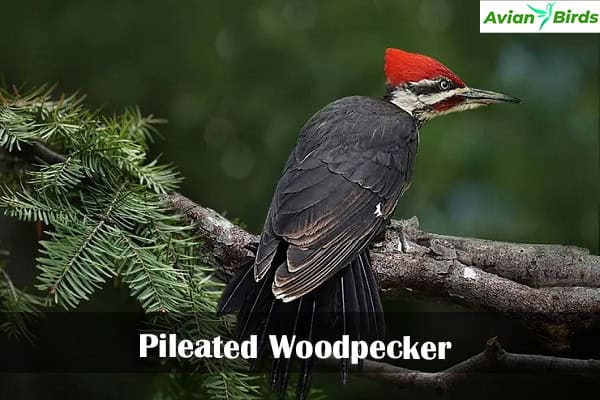
Even with their large size, pileated woodpeckers are common in Ohio’s woods. They have a strong breeding population and are not considered endangered. They make big holes in dead trees to find carpenter ants to eat.
These woodpeckers mate for life and have their territories. In spring and summer, they drum on trees to make nests for their eggs. These nests can hold 3-5 eggs.
Sometimes, pileated woodpeckers visit backyard feeders, especially for suet. In winter, their bright feathers are easy to see against the snow. They also like black oil sunflower seeds, hulled sunflower seeds, peanuts, and mealworms.
~Woodpeckers Of Ohio: Seasonal Visitors~
Ohio is home to 11 woodpecker species, but some visit only during certain times. The northern flicker and the yellow-bellied sapsucker are two seasonal visitors you might see in Ohio.
5. Northern Flicker
- Scientific name – Colaptes auratus
- Lifespan – 9 years (maximum recorded)
- Size – (32 cm)
- Weight – (126.5 g)
Woodpeckers In Ohio, the northern flicker is a medium-sized woodpecker that visits Ohio in the cooler months. It has gray and tan feathers, a black bib, and a white rump that shows when it flies. There are two types in Ohio: the yellow-shafted flicker with yellow underwings and the red-shafted flicker with reddish-orange colors.

These birds like to eat on the ground, looking for ants and other insects. You can see them moving quickly in open areas as they search for food.
6. Yellow-bellied Sapsucker
- Scientific name – Sphyrapicus varius
- Lifespan – 7 years (maximum recorded)
- Size – (20 cm)
- Weight – (50.3 g)
- Wingspan – (37 cm)
The yellow-bellied sapsucker is another bird that visits Ohio seasonally. It’s known for its unique way of eating. These birds make small holes in trees to get to the sap and eat the insects that come to it.

They have speckled feathers, a white shoulder patch, and a red throat in males or white in females. In Ohio, you’ll see them mostly in the winter. Some may stay in the summer as they move to their breeding grounds further north.
~Rare and Endangered Woodpeckers in Ohio~
Ohio is home to many woodpecker species, but some are rare or endangered. The red-headed woodpecker, ivory-billed woodpecker, and red-naped sapsucker are among these unique birds.
7. Red-Headed Woodpecker
- Scientific name – Melanerpes erythrocephalus
- Lifespan – 9 years (maximum recorded)
- Size – (22 cm)
- Weight – (76 g)
- Wingspan – (42.5 cm)
The red-headed woodpecker was once common in Ohio but is now rare. It lives in mature oak-hickory forests and open woodlands. Seeing red-headed woodpeckers in Ohio is special for bird lovers. It reminds us of the natural state’s beauty.
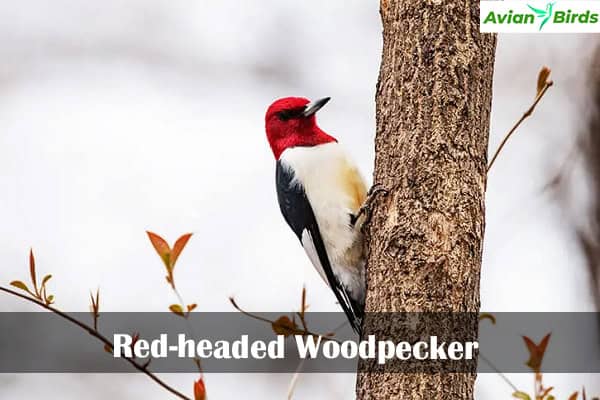
8. Ivory-Billed Woodpecker
- Scientific name – Campephilus principalis
- Lifespan – 15 years (maximum recorded)
- Size – (48,5 cm)
- Weight – (510 g)
- Wingspan – (78 cm)
The ivory-billed woodpecker was big and had unique features. It’s thought to be extinct, with no recent sightings. Its decline was due to habitat loss and hunting. Finding it again would be a big deal for birding and conservation in Ohio.

9. Red-Naped Sapsucker
The red-naped sapsucker is rare in Ohio. They drill holes in trees to get sap, like the yellow-bellied sapsucker. This bird has a red nape and throat, with a black and white back. Seeing one in Ohio is rare, so any sighting is important for research.
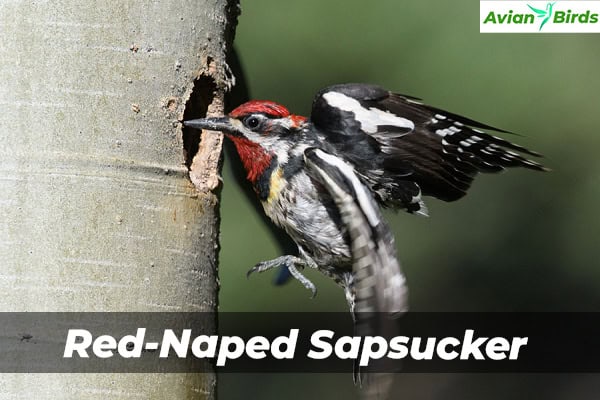
Importance of Woodpeckers in Ohio’s Ecosystems
Woodpeckers are key to Ohio’s ecosystem health and balance. They act as both predators and engineers, helping the state’s forests, woodlands, and cities thrive. These birds are essential to the woodpecker’s Ohio ecosystem.
Woodpeckers keep insect populations in check, targeting pests that harm trees and crops. They also create homes in dead trees for other birds, mammals, and insects. This shows how vital woodpeckers are to Ohio ecosystems.
The drumming of woodpeckers helps trees stay strong, fighting disease and decay. By protecting woodpeckers, we keep Ohio’s natural areas healthy. The role of woodpeckers in the ecosystem is clear.
Woodpecker-Watching and Birding Hotspots in Ohio
Ohio is a dream spot for bird lovers, with many places to see different woodpeckers and birds. You can visit the beautiful Cuyahoga Valley National Park or the famous Magee Marsh. These spots are great for watching woodpeckers and enjoying Ohio’s bird life.
1. Cuyahoga Valley National Park
Cuyahoga Valley National Park is near Cleveland and is perfect for birdwatchers. It has forests, wetlands, and meadows that attract many birds, including woodpeckers. You might see the Red-headed Woodpecker, Pileated, Downy, and Hairy Woodpeckers here.
The park has trails and viewing areas that are great for watching and taking pictures of these birds.
2. Pearson Park
Pearson Park in Toledo is another great place for woodpecker watching. It has forests and wetlands that attract many birds, including woodpeckers. You can see Pileated, Red-bellied, and Downy Woodpeckers, and the Northern Flicker in spring.
The park has trails and spots for watching birds in their natural setting.
3. Magee Marsh
Magee Marsh is by Lake Erie and is famous for spring bird migration. But it’s also home to many woodpeckers, like the Downy Woodpecker. You might see Red-bellied and Hairy Woodpeckers too.
The park is easy to get to and has good facilities, making it a favorite for bird lovers.
Characteristics and Behaviors of Woodpeckers
Woodpeckers in Ohio vary in size and color, from the Downy Woodpecker’s black and white to the Northern Flicker’s bright reds and yellows. They are known for their drumming and hammering. This helps them make nests, find food, and talk to other woodpeckers. They have long tongues and skulls that help them survive.
Wrapping up…
Ohio is a great place for woodpeckers, with 11 different kinds living here. From the tiny Downy Woodpecker to the big Pileated Woodpecker, these birds are key to Ohio’s ecosystems. If you love birdwatching or just enjoy nature, you should visit places like Cuyahoga Valley National Park, Pearson Park, and Magee Marsh.
Learning about woodpeckers in Ohio helps us protect them and their homes. These birds are interesting because of how they peck, what they eat, and where they live. We need to pay attention to them and help keep their homes safe.
Ohio’s woodpeckers are special, and learning about them connects us to nature. Whether you’re an expert or just starting to learn, we invite you to explore Ohio’s woodpeckers. Discover the beauty and importance of these amazing birds.

